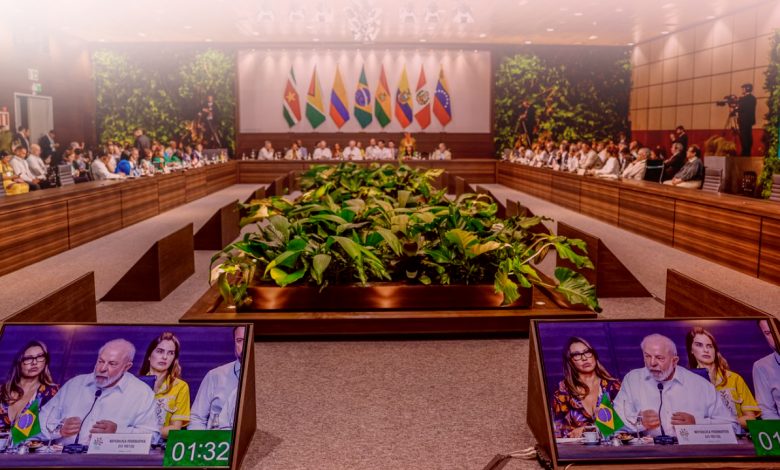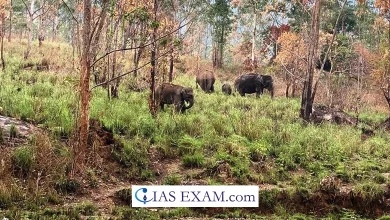
Context- The eight countries that make up the Amazon Cooperation Treaty Organization (ACTO) signed the Belém Declaration during the Amazon Summit.
Key Highlights
- The goal: an agreement to address threats to the Amazon rainforest and highlight its importance in combating the climate crisis.
- It reinforces the consensus agenda of Brazil, Bolivia, Colombia, Ecuador, Guyana, Peru, Suriname and Venezuela in the region.
- The Belém Declaration contains 113 multidisciplinary goals and principles signed in the city of Belém, Brazil.
- The Declaration promotes the sustainable use of Amazonian biodiversity.
- It recognizes indigenous knowledge as a prerequisite for biodiversity conservation and requires the full and effective participation of indigenous peoples in decision-making and public policy-making processes.
- The Declaration of Belém also foresees “the establishment of financial mechanisms aimed at promoting sustainable development”.
- ACTO will play a central role in the implementation of the new Amazon partner program.
The need for the declaration
- The document emphasizes the urgent need for regional awareness and cooperation to avoid the Amazon’s so-called point of no return.
- Experts use this term to refer to the point at which a forest loses its ability to regenerate. deforestation, degradation and global warming.
- Eight presidents have pledged to launch an Amazon alliance to combat deforestation, based on national goals such as zero deforestation by 2030.
Amazon Cooperative Agreement Organization (ACTO)
- It is an intergovernmental organization made up of eight Amazon countries: Bolivia, Brazil, Colombia, Ecuador, Guyana, Peru, Suriname and Venezuela, which signed the Amazon Cooperation Agreement (AKT), which became the only socio-environmental bloc in Latin America.
- ACT: The Amazon Cooperation Agreement (ACT) signed in 1978 gave birth to ACT, which aims to promote the harmonious development of the Amazon regions.
- In 1995, eight countries decided to sign the Amazon Cooperation Agreement (ACTO) to reinforce and implement the objectives of the Amazon Cooperation Agreement.
- Permanent Secretariat: Brazil, Brazil
Amazon rainforest
-
- Almost 60% of the rainforest is located in Brazil, the rest is divided between eight other countries – Bolivia, Colombia, Ecuador, Guyana, Peru, Suriname, Venezuela and the French overseas territory of French Guiana.
- It is located on the South American continent.
- The Amazon rainforest is the largest remaining tropical rainforest in the world.
- The rainforest includes:
- about one in ten known species on Earth,
- 1.6 billion acres of dense forests, about half of the planet’s remaining tropical forests,
- 20% of the world’s liquid fresh water,
- 2.7 million square kilometers in the Amazon basin, about 40% of South America.
- Importance:
-
- The Amazon Rainforest is sometimes called the “Lungs of the Earth” because it “breathes in” carbon dioxide and “breathes out” oxygen in large quantities.
- There is a clear connection between the health of the Amazon and the health of the planet.
- Despite covering only about 1% of the planet’s surface, the Amazon rainforest is home to 10% of all known wildlife, and probably a lot more that we don’t know about yet.
- Rainforests, which store about 150-200 billion tons of carbon, help stabilize the local and global climate.
- Challenges:
- Deforestation: Three times more forests were destroyed in the first half of 2022 than in the first half of 2017.
- Deforestation has increased year on year for the past five years and shows no signs of slowing down.
- Climate change: Rising global temperatures are causing tropical forests to dry out, increasing the risk of wildfires.
- Deforestation and destruction: Large areas of forest are cleared for agriculture, timber, roads, hydroelectric dams, mining, etc.
- Deforestation: Three times more forests were destroyed in the first half of 2022 than in the first half of 2017.
Food and agriculture:The increase in global demand for food, especially meat, has led Brazil to become the world’s largest exporter of beef and the second largest exporter of soybeans, which are mainly used as animal feed.





.png)



